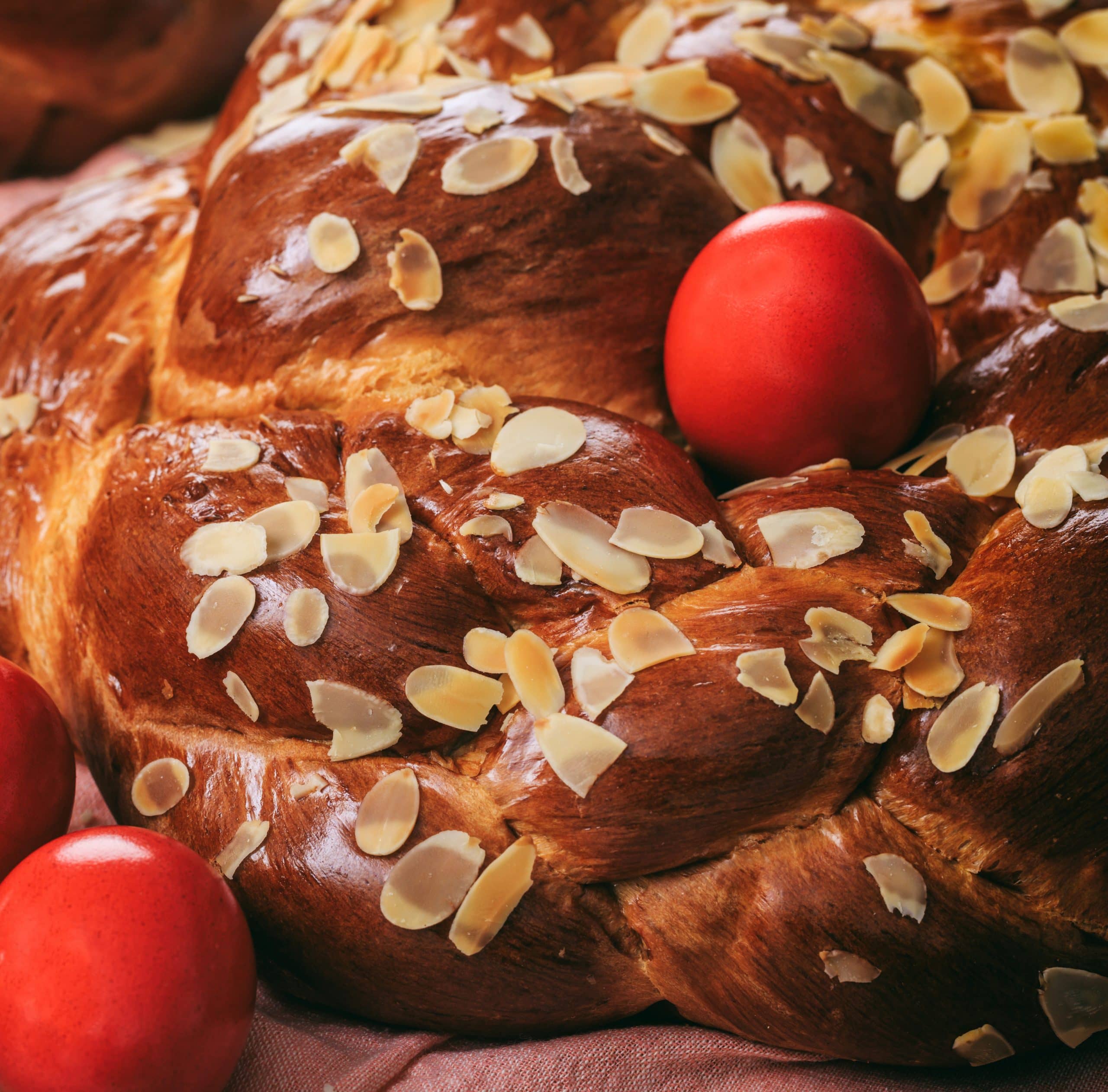 Greek Easter is filled with many traditions, most of which are related to food. Traditional Greek Easter bread, also called Tsoureki in Greek, is a staple at the table. People look forward to eating it each year. They make their family recipes, buy it from the stores, give it as gifts, and more. It is one of those treats where if it weren’t present at the table, Easter just wouldn’t be the same! Here’s more information about this bread:
Greek Easter is filled with many traditions, most of which are related to food. Traditional Greek Easter bread, also called Tsoureki in Greek, is a staple at the table. People look forward to eating it each year. They make their family recipes, buy it from the stores, give it as gifts, and more. It is one of those treats where if it weren’t present at the table, Easter just wouldn’t be the same! Here’s more information about this bread:
Origin of the Word “Tsoureki”
There is some debate as to where the Greek word Tsoureki came from. Some think that it came from the Turkish word “çörek” which is a similar dish as the Greek Easter Bread. Others think that the word had Persian or maybe even Armenian origins. There is also the possibility that the word originated in Greek and spread to other languages in some form. The truth is, many cultures in that region have breads that are similar that are not only served at Easter but for other holidays, such as Christmas.
Eating Tsoureki at Easter
In fact, Greek cuisine has many of versions of this bread that are served on key holidays. This includes vasilopita, which is made on New Year’s Day and christopsomo, which is made for Christmas. Each version of the bread has slight difference but there are distinct similarities. Each of these breads are nearly cavelike in texture and include milk, eggs, and sugar.
How Tsoureki is Made
No matter which version of tsoureki you make, they all have distinct similarities. Here is a list of what to expect from almost every version:
- Sweet. Tsoureki dough is sweet and includes yeast, flour, milk, butter, eggs, and sugar.
- Spices. This bread also uses unique spices. Mahleb is the most common, unless it can’t be found. Some versions include replacement spices like nutmeg, cinnamon, mastic, and orange zest.
- Red Egg. No matter how the bread is made, it is typical to bake a bright red Greek Easter egg in the center for a decoration.
There is a reason why there are so many different versions. Tsoureki recipes tend to change according to the different families, region of Greece the recipe originated from, and whether or no certain ingredients are available no matter where the recipe is being made in the world. This is part of what makes these food traditions so special!
Do you want to try making Tsoureki for yourself? Click here to take a look at our recipe!
Source:

